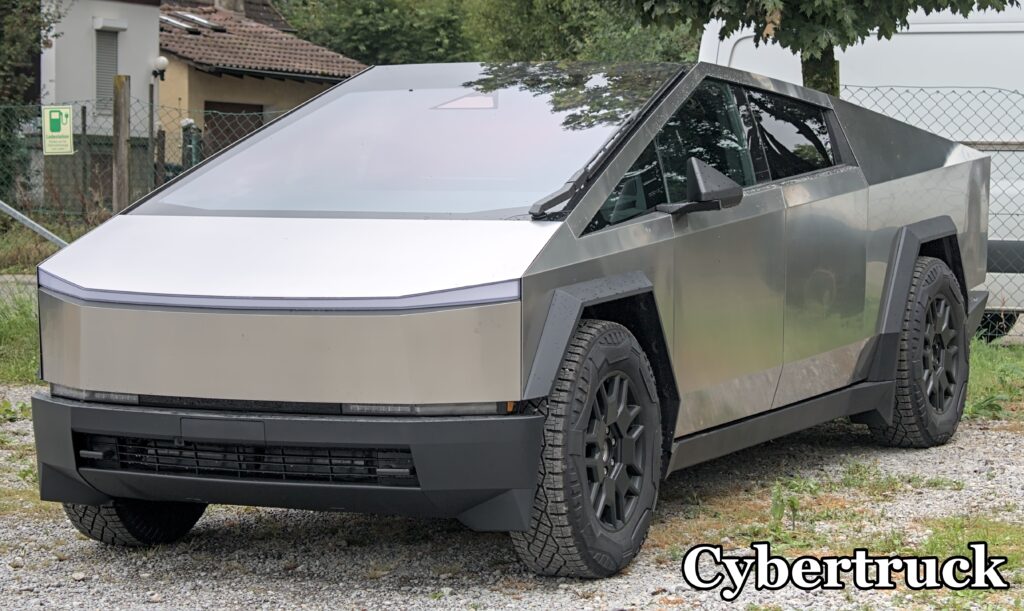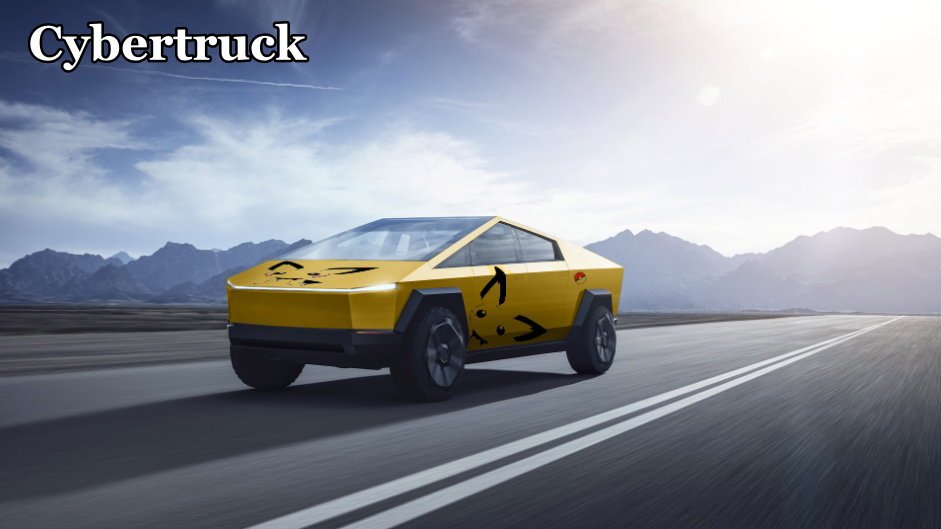Tesla’s Cybertruck, a futuristic and controversial vehicle, is now at the center of a storm that’s gaining momentum across the globe. What was once hailed as the most eagerly awaited ride has now become the subject of fierce global backlash. Nations are imposing bans and seizing vehicles, while its design faces severe criticism.
As the Cybertruck makes headlines for all the wrong reasons, one burning question persists: why are countries rejecting this behemoth of innovation? Is the Cybertruck a misunderstood marvel or an out-of-control menace on wheels?
Let’s dive in as we unravel the rogue nations turning against it, exposing the reasons behind their revolt, and probe whether Tesla can recover from this stunning setback.
The Cybertruck: From Hero to Villain
The Cybertruck was initially poised to revolutionize the automotive industry. When Elon Musk first revealed the Cybertruck, the world was captivated by its audacious, angular design, and futuristic features. However, as time went on, the Cybertruck became a polarizing symbol of innovation and defiance—one that seems to be causing more problems than it’s solving.

The Cybertruck’s sharp edges, massive size, and rigid exoskeleton have raised concerns in several countries, with some governments slamming the brakes on its debut. In fact, the once-celebrated truck is now facing a worldwide reckoning.
Global Bans and Vandalism: A Rollercoaster of Rejection
United Kingdom: The First Major Setback
In January 2025, the Greater Manchester police seized a Cybertruck for violating local safety regulations. The problem? It didn’t meet the country’s Certificate of Conformity, a legal requirement for vehicles to comply with local safety standards. This was just the beginning of a series of challenges that would plague Tesla’s flagship vehicle in Europe.
Key issues causing the Cybertruck’s troubles in the UK include:
- Size and Weight – The Cybertruck is a massive vehicle, weighing in at nearly 7,000 lbs and stretching over 2.2 meters wide. In the UK, driving such a large vehicle requires a special Category C1 license, typically reserved for small trucks.
- Sharp Edges – The Cybertruck’s stainless steel body may look sleek, but it doesn’t meet the UK rule that requires vehicle edges to be rounded to at least 3.2mm for safety reasons. This makes the vehicle a danger to pedestrians, especially in low-speed collisions.
- Lights and Speed – The full-width light bar on the Cybertruck doesn’t meet UK regulations for brightness, positioning, and visibility. Moreover, the Cybertruck’s acceleration (0-60 mph in just 2.6 seconds) could pose risks when combined with its massive weight.
Despite being a technological marvel, the Cybertruck’s design has earned more ire than admiration. But the UK is far from alone in rejecting this audacious vehicle.

Ireland: Narrow Roads and Sharp Edges
Across the Irish Sea, Ireland is facing similar issues with the Cybertruck. Ireland’s winding country roads aren’t exactly designed for a nearly 7,000 lb metal beast. Picture trying to squeeze a truck the size of a Cybertruck into a small village lane. The result? Disastrous traffic jams and accidents waiting to happen.
But size isn’t the only issue in Ireland:
- Pedestrian Safety – Much like the UK, Ireland enforces strict rules to minimize injury risk to pedestrians. The Cybertruck’s sharp, rigid body is as unforgiving as a medieval battering ram, making it dangerous in case of an accident.
- Weight Limitations – Drivers in Ireland with a standard B license can only drive vehicles weighing up to 3.5 tons. The Cybertruck, while borderline, is pushing this limit. Add a full load of camping gear or heavy luggage, and you could be in violation of the weight restrictions.
- Accelerator Pedal Recall – Tesla’s 2024 recall for accelerator pedals that could get stuck adds to the growing list of reasons why the Cybertruck is far from ideal for European roads.
Australia: Struggling with Wildlife and Infrastructure
When you think of Australia, you think of vast outback, unpredictable wildlife, and an environment where only the most rugged vehicles should roam. The Cybertruck is definitely rugged, but its design doesn’t fit well with Australian regulations.
Here’s why:
- Crash Safety Concerns – The Cybertruck’s rigid exoskeleton turns crashes into catastrophic events. The body doesn’t dent—it stays rigid, which could cause significant injury in a collision. Imagine hitting a kangaroo with a Cybertruck; the animal wouldn’t just be injured—it could become a projectile.
- Left-Hand Drive – Australia requires right-hand drive vehicles, but Tesla’s Texas-based factory isn’t configured to produce right-hand drive Cybertrucks. Rebuilding the production line would be a costly venture that Tesla may not be willing to undertake.
- Infrastructure Challenges – While Australia’s cities have ample EV chargers, the outback is a different story. Imagine running out of charge in the middle of nowhere—your Cybertruck could become an expensive metal tent, stranded with no charging stations nearby.

China: Strict Regulations and Stiff Competition
In China, the Cybertruck is facing an uphill battle despite not being officially banned. Tesla briefly filed for an energy consumption measurement with China’s Ministry of Industry and Information Technology (MIIT) but withdrew the filing soon after. Why? Perhaps Tesla realized that the Cybertruck’s sharp-edged design wouldn’t pass China’s stringent pedestrian safety regulations.
Other hurdles include:
- Pickup Truck Restrictions – Pickup trucks in China already face heavy restrictions. They often cannot access city centers and are required to be scrapped after 15 years. This creates a major challenge for Cybertruck owners who might find themselves constantly fighting regulatory battles.
- Battery Failures and Brake Issues – Tesla has faced controversies in China regarding battery fires and brake failures. These controversies have already tarnished Tesla’s reputation, and the Cybertruck’s presence in the Chinese market seems unlikely.
The Debate: Is the Cybertruck Worth the Trouble?
So, what does all of this mean for Tesla and the Cybertruck’s future? Is it worth the trouble to re-engineer the vehicle to comply with the safety standards of various nations? Would that sacrifice the vehicle’s unique design and the wild essence that made it a futuristic icon?
Reengineering the Cybertruck: The Costly Fix
Tesla could, in theory, rework the Cybertruck’s design to make it safer and more practical for international roads. This would involve:
- Softening the sharp edges to minimize pedestrian injury risk.
- Reducing its weight to meet local restrictions.
- Reconfiguring the production line to make right-hand drive versions.
However, such changes would not come cheap. The redesign process could be costly, and it might dilute the Cybertruck’s audacious appeal, turning it into just another truck on the road.
The Future of Electric Vehicles and the Cybertruck
The Cybertruck’s backlash presents a seismic clash of philosophies in the automotive world. Regulators focus on safety and practicality, while Tesla advocates bold, experimental design. This standoff is not just about one vehicle, but about the future of the electric vehicle revolution itself.
The question is, will the world favor safety and practicality over innovative boldness? Will the Cybertruck’s bans signal the end of extreme design and the rise of safe, uniform vehicles, or can a middle ground emerge that blends risk-taking innovation with public safety?

Conclusion: Will the Cybertruck Get a Shot at Redemption?
The Cybertruck’s saga is far from over. While many countries are rejecting the vehicle for its sharp edges, heavy weight, and potential safety hazards, there is still hope that Tesla will find a way to reimagine the vehicle to meet international standards. Whether or not this iconic truck will overcome the hurdles it faces depends on whether Tesla is willing to compromise its design for the sake of global appeal.
So, what do you think? Does the Cybertruck deserve a shot at redemption, or are its exile and bans a justified response to a world that values safety over innovation?
The future of the Cybertruck—and perhaps Tesla’s entire vision—hangs in the balance.
FAQs
1. Why are countries banning the Tesla Cybertruck?
Countries are banning the Tesla Cybertruck due to concerns about its design, size, and safety features. Issues such as its sharp edges, heavy weight, and the inability to meet local safety standards have led to bans in several nations, including the UK, Ireland, and Australia.
2. What are the key safety concerns regarding the Cybertruck?
The main safety concerns are the sharp stainless steel edges, which are considered dangerous to pedestrians in case of a collision. Additionally, the Cybertruck’s massive size and weight make it difficult to handle in urban areas with narrow roads, increasing the risk of accidents.
3. Why is the Cybertruck not allowed on UK roads?
In the UK, the Cybertruck was seized for not meeting the Certificate of Conformity, which is required for vehicles to comply with local safety standards. The sharp edges, excessive weight, and lack of proper lighting also contributed to the ban.
4. Can the Cybertruck be re-engineered to meet global safety standards?
Yes, Tesla could potentially re-engineer the Cybertruck to meet global safety standards by making adjustments to its design, such as softening the sharp edges, reducing its weight, and ensuring proper lighting. However, this would be a costly process that could affect the vehicle’s unique appeal.
5. What are the issues with the Cybertruck in Australia?
In Australia, the Cybertruck’s rigid exoskeleton and sharp edges pose serious risks in crashes, making it unsuitable for Australian roads. Additionally, the right-hand drive version is not yet produced, and the vast outback lacks sufficient charging infrastructure for electric vehicles.
6. Why is the Cybertruck struggling in China?
The Cybertruck’s sharp-edged design conflicts with China’s pedestrian safety regulations, which require cars to minimize injury risks. Additionally, pickup trucks in China face strict restrictions, such as limited access to city centers, making it difficult for the Cybertruck to navigate local regulations.
7. What is the weight limit for vehicles in Europe?
In Europe, drivers with a standard B license can only drive vehicles weighing up to 3.5 tons. The Cybertruck is close to this limit, and loading it with additional cargo could violate these weight restrictions, further complicating its approval for European roads.
8. Can Tesla recover from the Cybertruck’s global rejection?
While Tesla faces significant challenges with the Cybertruck, it is still possible for the company to re-engineer the vehicle to meet international standards. However, this may require compromises on its design and appeal, which could alter its original concept.
Read More:
- SpaceX’s Solution to FIX Starship Hot Stage Mistake! New Genius Design revealed
- Tesla US Gigafactories shields from Trump’s 25% Tariffs
- Tesla Unveils Model Y RWD 110 customized for Singapore
- Tesla best-rated car brand in UK, beats Toyota in reliability: survey
- OPINION: Tesla Vandalism lawsuit should be the first of many


That’s ridiculous